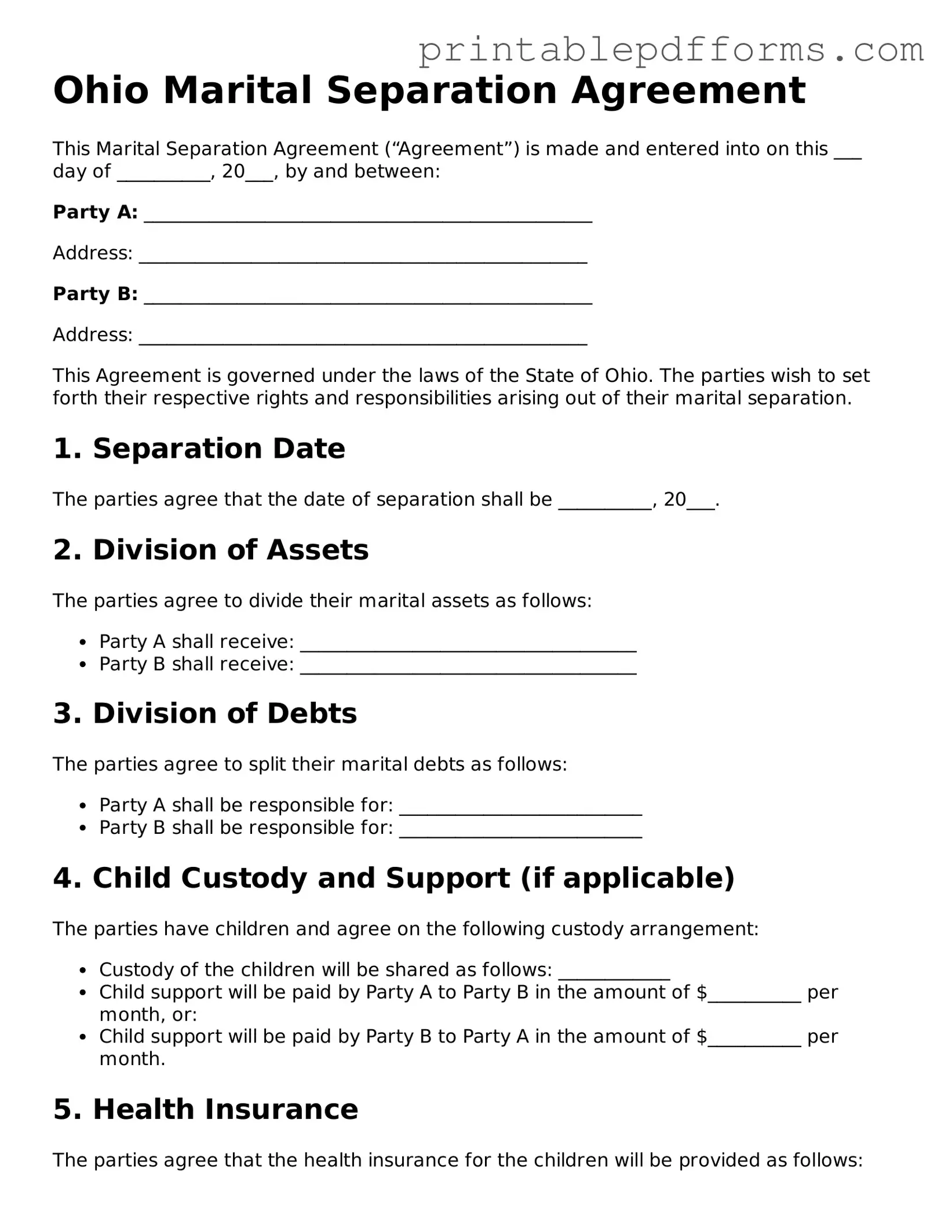Ohio Marital Separation Agreement
This Marital Separation Agreement (“Agreement”) is made and entered into on this ___ day of __________, 20___, by and between:
Party A: ________________________________________________
Address: ________________________________________________
Party B: ________________________________________________
Address: ________________________________________________
This Agreement is governed under the laws of the State of Ohio. The parties wish to set forth their respective rights and responsibilities arising out of their marital separation.
1. Separation Date
The parties agree that the date of separation shall be __________, 20___.
2. Division of Assets
The parties agree to divide their marital assets as follows:
- Party A shall receive: ____________________________________
- Party B shall receive: ____________________________________
3. Division of Debts
The parties agree to split their marital debts as follows:
- Party A shall be responsible for: __________________________
- Party B shall be responsible for: __________________________
4. Child Custody and Support (if applicable)
The parties have children and agree on the following custody arrangement:
- Custody of the children will be shared as follows: ____________
- Child support will be paid by Party A to Party B in the amount of $__________ per month, or:
- Child support will be paid by Party B to Party A in the amount of $__________ per month.
5. Health Insurance
The parties agree that the health insurance for the children will be provided as follows:
- Party A shall provide health insurance coverage.
- Party B shall reimburse Party A for half of the costs.
6. General Provisions
- This Agreement represents the entire agreement between the parties.
- Any amendments must be in writing and signed by both parties.
- This Agreement is binding upon the parties and their heirs, assigns, and successors.
By signing below, both parties confirm that they understand and agree to the terms outlined in this Ohio Marital Separation Agreement.
Party A Signature: _____________________________ Date: ______________
Party B Signature: _____________________________ Date: ______________
